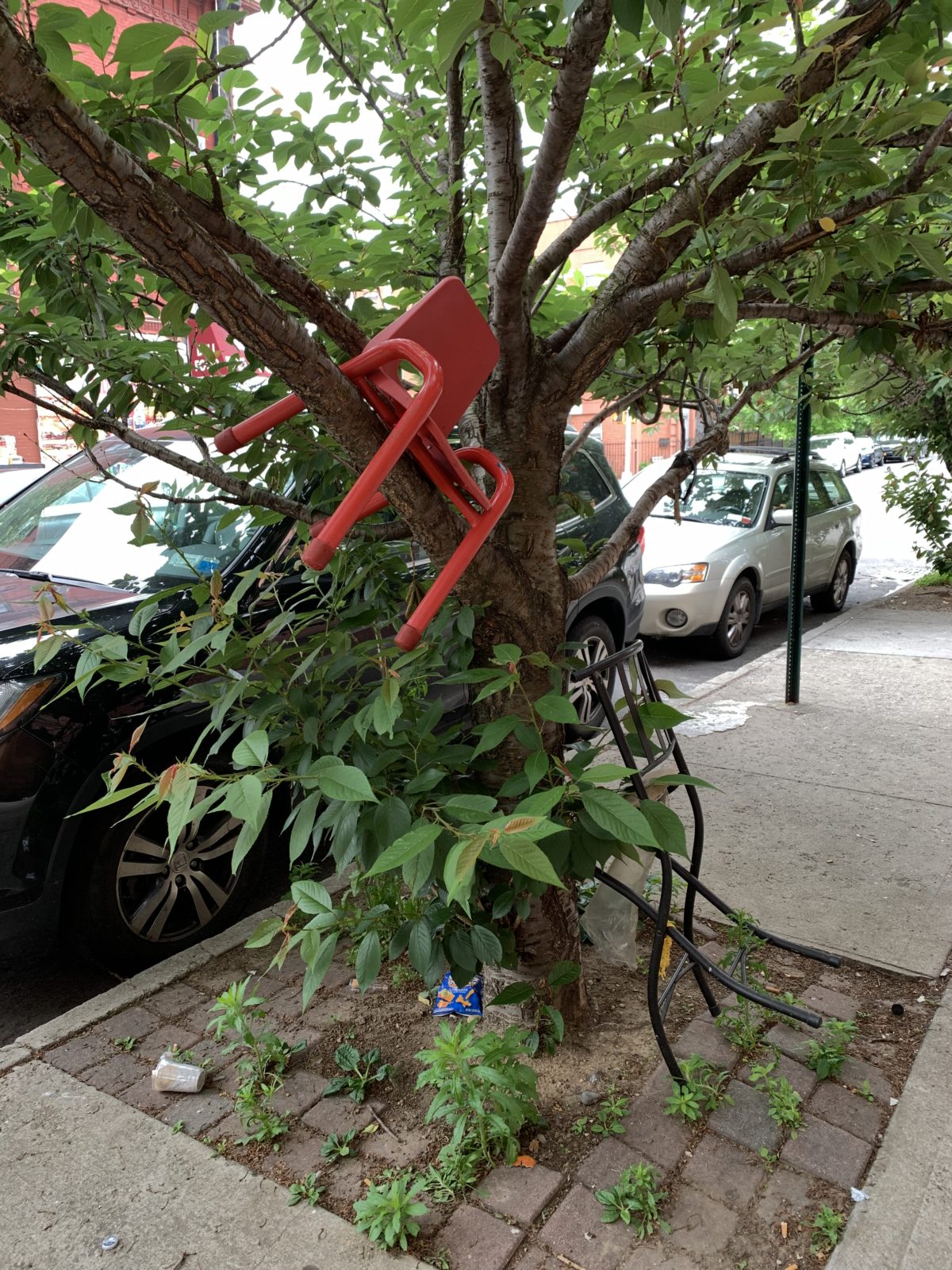
In Bed-Stuy, there are approximately 64,212 residents per square mile. Of the people who live within the square mile surrounding the apartment where I’ve lived for the past 8 months, I know about 12 by name. I’ve met eight of those people through my partner, who’s lived in the area for nine years.
I wish I knew more of my neighbors. But typically, opportunities to move beyond a simple “good morning” on the stoop feel scarce: I rush to work in the morning and get home after dark. On the weekends, I lay in bed exhausted until I force myself up to do errands or run to an event. Even more shameful: I have a car. (I drove it from California with the intention of selling it when I arrived, but never did.) Practically, I have few reasons to walk.
That changed when the pandemic fell over the city. Like many others sequestered in their homes, I needed a reason to get out of the house. My partner and I began taking aimless walks around our neighborhood every day after work, and I started mapping out new references for what was around me: the cherry blossom tree on the corner that has a folding chair tucked into its low branches, waiting to be opened for a sidewalk chat; the window half way up the public housing unit with a sheet hanging out of it, hand-painted with the words “Rent Strike Now;” the community garden tucked away between two condos. What I had once registered as buildings turned into homes; strangers turned into neighbors.
From this sidewalk vantage-point, limited to the 20-or-so walkable blocks around my apartment, I began to consider my neighbors more, and feel a newfound concern for them. About ten days into quarantine, I joined a mutual aid group that lets Bed-Stuy residents organize to buy and deliver groceries to their elderly, immunocompromised, or otherwise in-need neighbors. It’s a very intimate thing, shopping for someone else. I found myself at the same grocery store I typically go to, but reaching for items I’d never even noticed before—partially because I don’t have to feed a family of four. After I dropped off my first delivery, walking the groceries to an eldery woman who lives a few blocks away from me, I burst into tears. It was overwhelming to confront the direct needs of someone who had always been so close, but until then had felt so far.
By six weeks into quarantine, I had a new sense of a day’s length and a block’s distance. For my partner’s birthday, I planned a surprise parade around our neighborhood, so they could see all their friends without people having to gather. Each person chose a corner to stand on with a sign, and we biked along the route, bumping music on a bluetooth speaker and yelling in joy at each friend. We were physically distant and could only see each other for about 30 seconds, but the parade felt intimate—as if our friends had shown up for us in a new way. Before the pandemic, I would never have expected anyone to spend an hour walking just to stand on a street corner and wave.
More than anything, taking up walking has taught me a lesson about time. The relentless pace of capitalism creates a kind of tunnel vision in which meeting your own needs and desires too often feels like the most you can accomplish. That endless race, and sense that time is a scarce resource we must hoard for ourselves, is, in part, what keeps many of us from actually wrestling with our privilege in relationship to place and community, and from building relationships rooted in care and generosity. The pandemic proved that I had always had the time to take a walk on someone else’s behalf; I just needed to reclaim before I could give it away.




